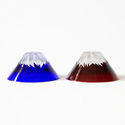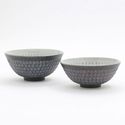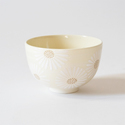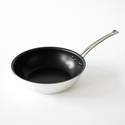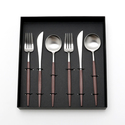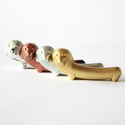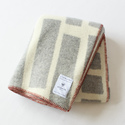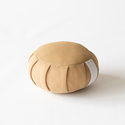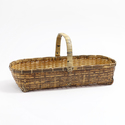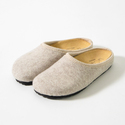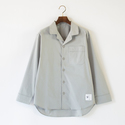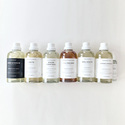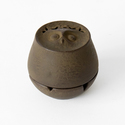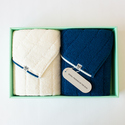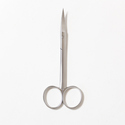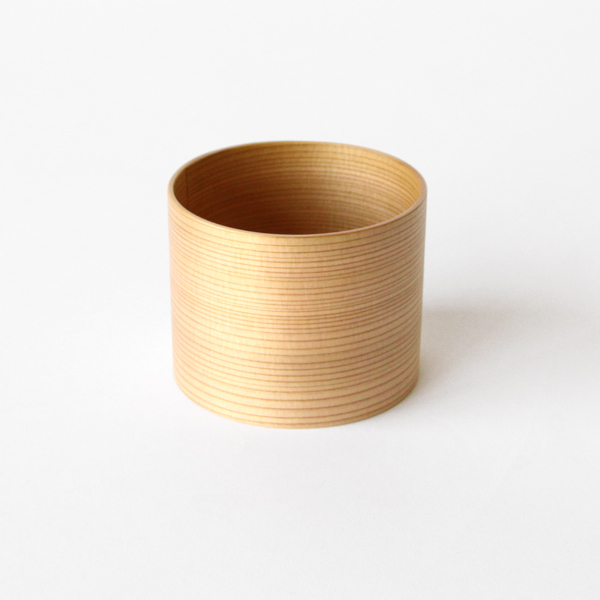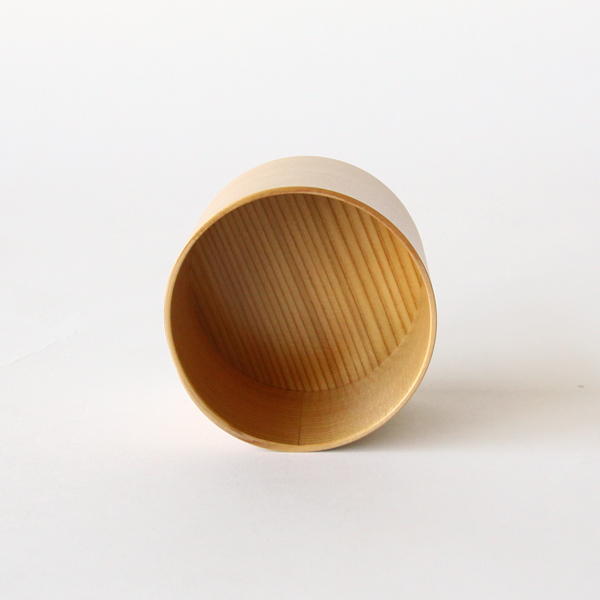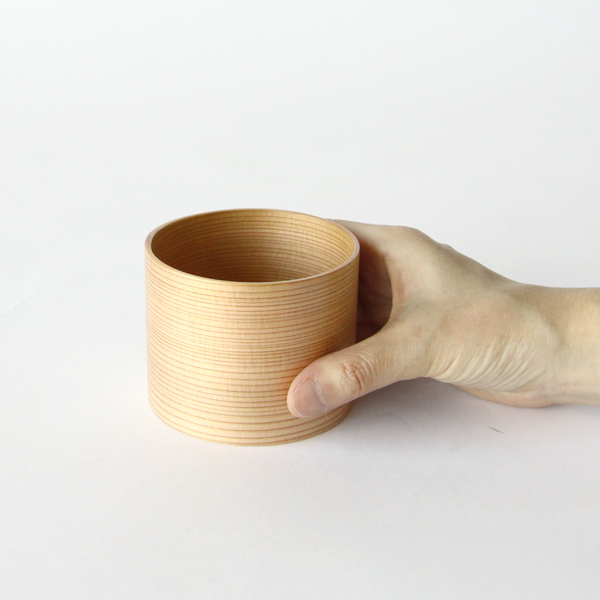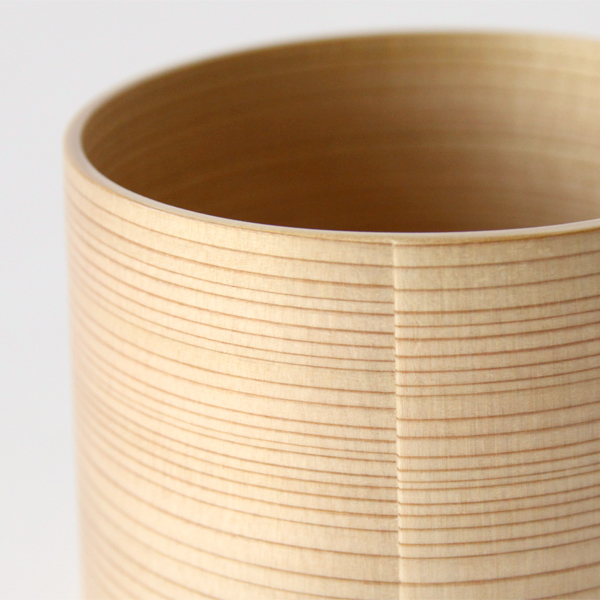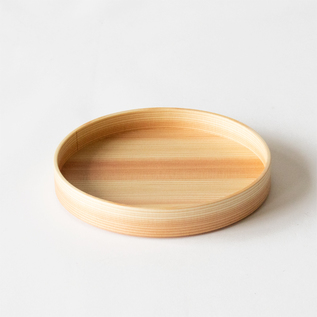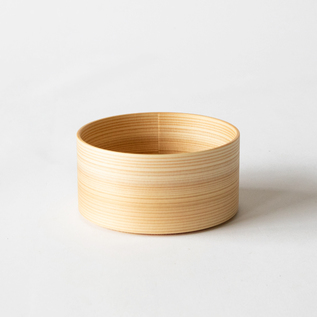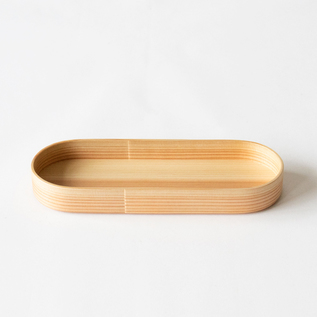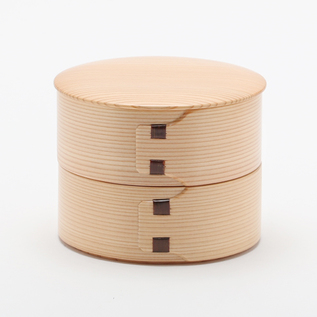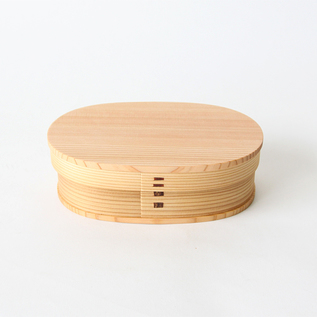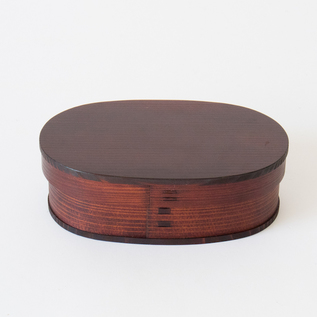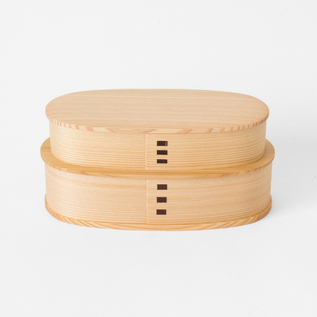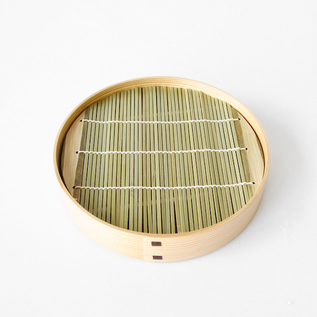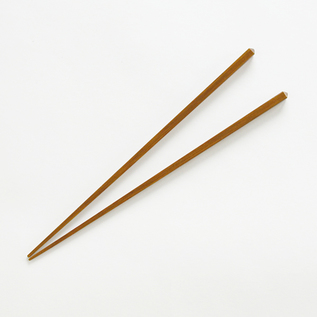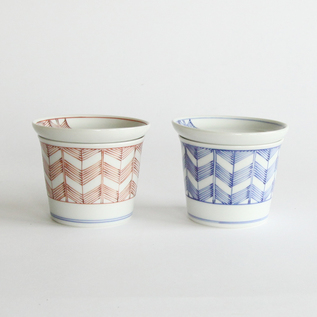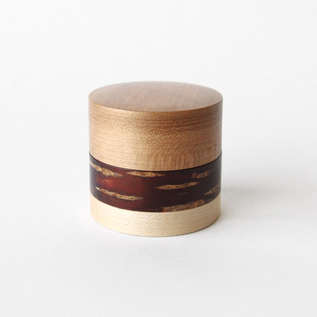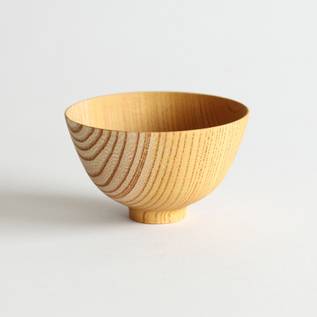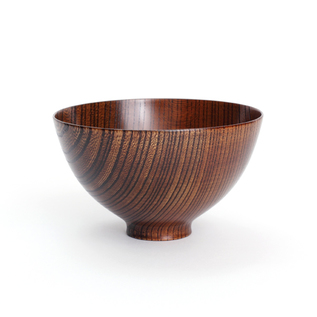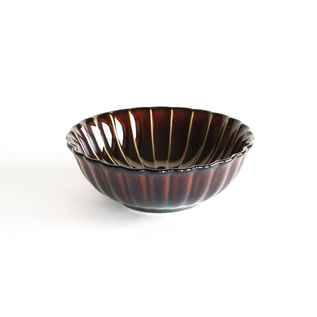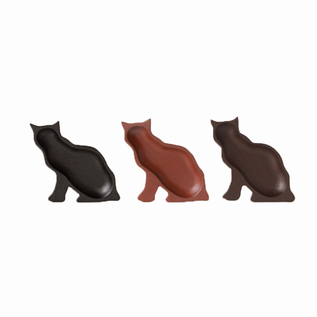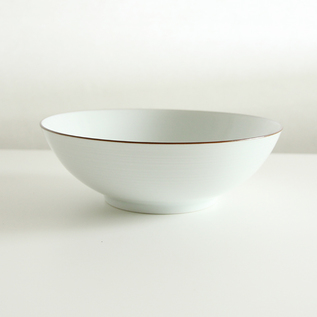- トップページ/
- Gifts by scene/
- Gifts for spring & summer/
- SOBA CHOKO
SOBA CHOKO
Cup for dipping soba
SOBA CHOKO is made as a small cup for dipping soba, the Japanese noodle. People pour sauce in the cup and hold to dip noodles. What is incredible about SOBA CHOKO of Odate Kougeisha is it is made of wood. We can see the outstanding of craftwork called Mage-Wappa, that is, the technique of bending wood to make a container.
Traditional crafts that harness the power of nature
The material of SOBA CHOKO is 150 to 200-years-old Akita-sugi, a kind of cedar tree grown in Akita prefecture of Japan. Akita-sugi has a beautiful luster and is hard to warp. In addition to its excellent durability, Akita-sugi is good at adjusting the moisture and has an antibacterial effect. Besides, when you use the cup, you can enjoy its scent.
The craftwork, Mage-Wappa, has started its history in the Nara period (A.D. 710 to 794). It is said that a woodcutter bent a cedar wood and made a lunch box sewn with cherry tree bark. In Odate city of Akita prefecture, the production of Mage-Wappa started about 400 years ago, and Mage-Wappa produced in Odate city was designated as a national traditional craft in 1980. While there are various types of crafts called Mage-Wappa in Japan, the product of Odate city is the only one selected as a national traditional craft among Mage-Wappa because of its excellent technique and quality.
Simple maintenance and one life
Mage-Wappa is made through the process of boiling Akita-sugi, bending, binding, and sewing. The well-grounded Akita-sugi has amazingly smooth touch.
After using, use a soft sponge and warm water to remove the stain, and wipe moisture carefully. It is crucial to dry the cup completely for long-use. Be careful not to expose to direct sunlight or use a dishwasher.
With just a little care, the lunch box of Mage-Wappa would be a useful tool for your life.
| Size | Diameter 8cm
Height 6.5cm |
| Material | Akita-sugi (Cedar tree) |
| Coating | Urethane coating |
| Country of origin | Japan |
| Box | Yes |
| Compatible equipment | Microwave oven: ×
Dishwasher: × Oven: × |
Notice
-
- There is a possibility that the urethane coating may smell at the time of delivery, but we appreciate your understanding that it will fade after washing several times.
◇Please be careful not to damage the coating on the surface.
◇After use, please wash the stain with and wipe off moisture with a dry cloth. Do not soak in hot water for a long time or use a dishwasher.
◇Do not use polish.
◇Do not use microwave ovens.
ブランド紹介
ODATE KOUGEISHA
The craftwork, Mage-Wappa, has started its history in the Nara period (A.D. 710 to 794). It is said that a woodcutter bent a cedar wood and made a container sewn with cherry tree bark. In Odate city of Akita prefecture, the production of Mage-Wappa started about 400 years ago, and Mage-Wappa produced in Odate city was designated as a national traditional craft in 1980. Mage-Wappa is made through the process of boiling Akita-sugi, bending, binding, and sewing. The well-grounded Akita-sugi becomes amazingly smooth, durable and clean products.
| 商品 | 価格(税込) | 在庫 | 個数 | |
|---|---|---|---|---|

|
¥3,300(税込) |
△
残り2点 |
Added to cart
そばちょこには、他にもこんな仲間がいます
-
ODATE KOUGEISHA
OSUGI WARABE SET¥10,010〜(税込)
-
ODATE KOUGEISHA
BLAKC PA WOOD DISH¥5,500〜(税込)
-
ODATE KOUGEISHA
BLAKC PA WOOD BOWL¥6,600〜(税込)
-
ODATE KOUGEISHA
BLAKC PA WOOD OVAL DISH¥6,050〜(税込)
-
ODATE KOUGEISHA
ROUND DOUBLE BENTO BOX¥10,450(税込)
-
ODATE KOUGEISHA
OVAL LUNCH BOX SMALL¥9,350〜(税込)
-
ODATE KOUGEISHA
OVAL WAPPA LUNCH BOX WITH URUSHI COATING¥14,300〜(税込)
-
ODATE KOUGEISHA
TWO-LAYER YAGURA BENTO BOX¥14,300(税込)
-
ODATE KOUGEISHA
MICHI BENTO BOX¥12,100(税込)
-
ODATE KOUGEISHA
TWO-LAYER WAPPA LUNCH BOX¥13,200(税込)
-
ODATE KOUGEISHA
SOBA PLATE¥6,600(税込)
そばちょこを見た人はこんなアイテムも見ています
-
HYOZAEMON
Chopsticks for soba L¥1,650(税込)
-
MIYAMOTO TAIZANDO
SOBA CUP YABANE PATTERN SET OF 2¥9,823(税込)
-
Kakunodate DENSHIRO
Cylinder 3 colors Sakura¥13,200(税込)
-
KIHACHI
ZELKOVA SAKE CUP¥4,620(税込)
-
KIHACHI
Zelkova free bowl Lacquer Urushi¥6,380(税込)
-
KANEKO KOHYO
GIYAMAN POTTERY SHALLOW SMALL BOWL¥2,750(税込)
-
WAJIMAKIRIMOTO
Small plate Cat¥9,900(税込)
-
HAKUSAN PORCELAIN
Flat bowl shallow¥2,970〜(税込)

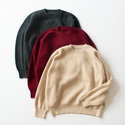


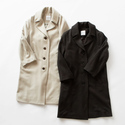

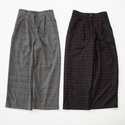
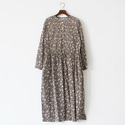


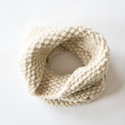
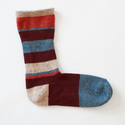
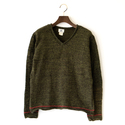

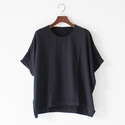
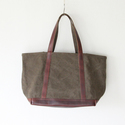

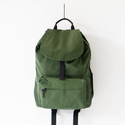
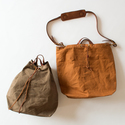

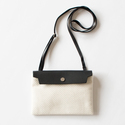
.jpg)
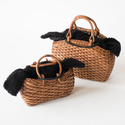
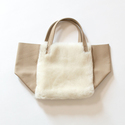
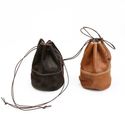
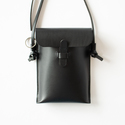

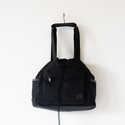
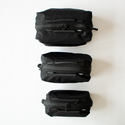
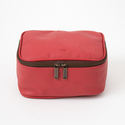
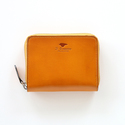
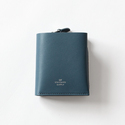
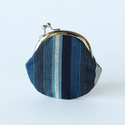
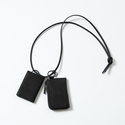
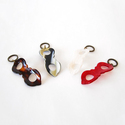
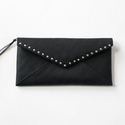
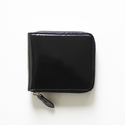


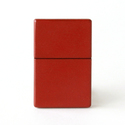
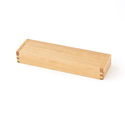
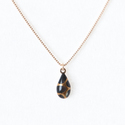

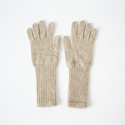


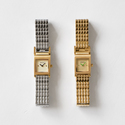

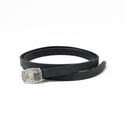
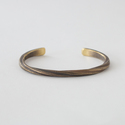
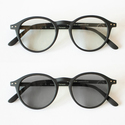
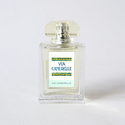

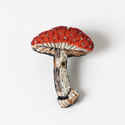
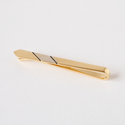
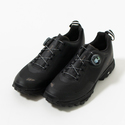


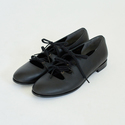
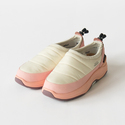
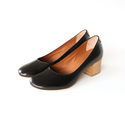


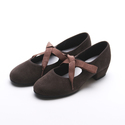
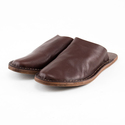
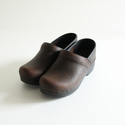

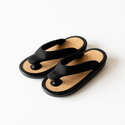
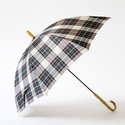
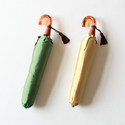
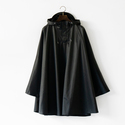
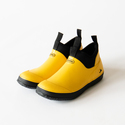
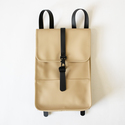
.jpg)

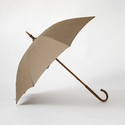
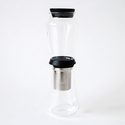

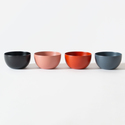
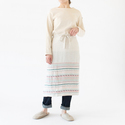
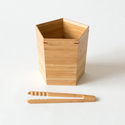
.jpg)

